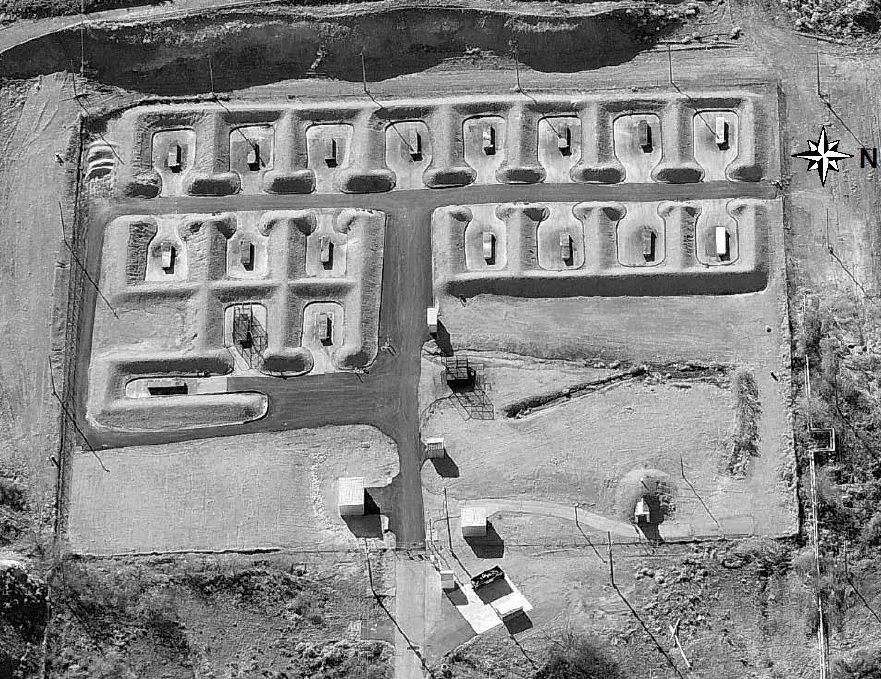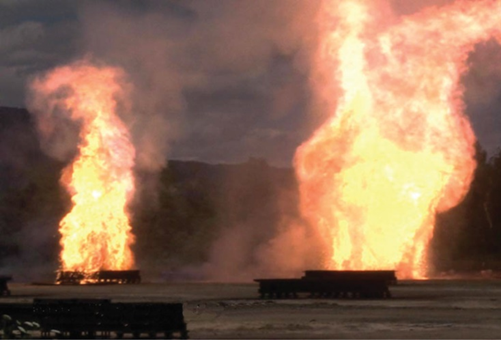
The Bacchus Burning Grounds consist of 17 burn pans and two burn cages where the U.S. Navy currently burns hazardous wastes in the open air – causing an ongoing, uncontrolled release of toxic emissions to the environment.
In formal comments submitted today to Utah environmental regulators and the U.S. EPA, a national coalition of 60 groups from around the U.S. is objecting to the approval of a permit which will allow the continued open air burning of hazardous munitions wastes at the ATK Bacchus Facility – Naval Industrial Reserve Ordnance Plant (NIROP) in West Valley City.
The coalition’s objections are based on the availability of safer advanced alternatives for treatment, the excessive risk to human health and the environment, and noncompliance with federal and state law requiring the implementation of available safer treatment methods.
 The groups point to a wide range of technologies that have been deployed at dozens of military sites around the country. In fact, the U.S. EPA – the federal agency responsible for overseeing the hazardous waste permitting process at the Bacchus site – recently published a national report on alternatives that capture and treat toxic emissions rather than dispersing them directly to the environment.
The groups point to a wide range of technologies that have been deployed at dozens of military sites around the country. In fact, the U.S. EPA – the federal agency responsible for overseeing the hazardous waste permitting process at the Bacchus site – recently published a national report on alternatives that capture and treat toxic emissions rather than dispersing them directly to the environment.
“The State and the U.S. EPA have the opportunity and duty to impel the military and its contractors to utilize treatment technologies that protect workers, service members, and communities from exposure to toxic emissions caused by the open burning of munitions wastes,” said Laura Olah, National Coordinator for the Cease Fire Campaign. “No other industry is allowed to open burn its hazardous waste.”
The NIROP Burning Grounds consist of 17 burn pans and two burn cages where the U.S. Navy burns energetic and reactive hazardous wastes in the open air – causing an ongoing, uncontrolled release of toxic emissions to the environment.
The burned wastes contain perchlorate – a widespread groundwater contaminant associated with the Bacchus site. Perchlorate groundwater contamination has migrated several miles beyond the 10,000-acre plant property. In 2013, Utah DEQ reported that the contamination had been detected in drinking water wells. Perchlorates are endocrine disruptors that effect the normal growth and development of infants and children.
 The use of toxic chemicals known as PFAS (per- and polyfluoroalkyl substances) in high energy-release pyrotechnic compositions is common in the space and Defense areas. PFAS are widely used in military flares and pyrogen igniters for igniting the solid propellant of rocket motors – one the principal wastes treated at the burning grounds.
The use of toxic chemicals known as PFAS (per- and polyfluoroalkyl substances) in high energy-release pyrotechnic compositions is common in the space and Defense areas. PFAS are widely used in military flares and pyrogen igniters for igniting the solid propellant of rocket motors – one the principal wastes treated at the burning grounds.
However, open burning and incineration do not destroy PFAS. Once released to the air as fugitive emissions, PFAS are carried far from the source area, contaminating the land and water resources. Often referred to as “forever chemicals,” PFAS persist in the environment for years, decades, or longer. Mounting research links PFAS to a wide range of health problems including kidney cancer and testicular cancer, as well as endocrine disruption in humans.
The Utah Division of Waste Management and Radiation Controls is accepting public comment on the proposed hazardous waste permit until July 31, 2020. Instructions to submit your own comments are posted here.
Cease Fire Campaign CSWAB Comment Utah NIROP OB OD Permit Renewal July 2020
EPA Final Report on Alternatives to Open Burning Detonation Dec 2019
Public Notice Instructions for Submitting Public Comments DSHW-2020-008274
Utah NIROP Navy Burning Grounds Draft Permit DSHW-2020-008642

